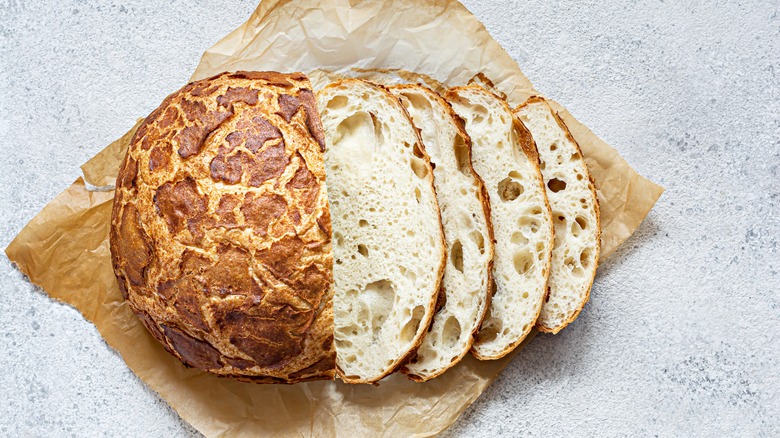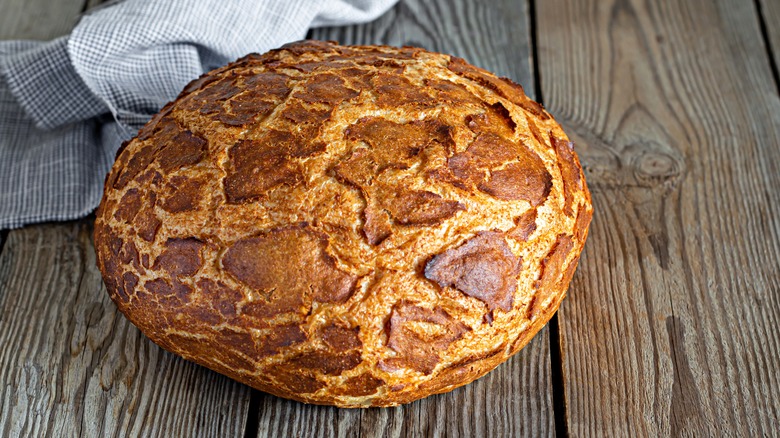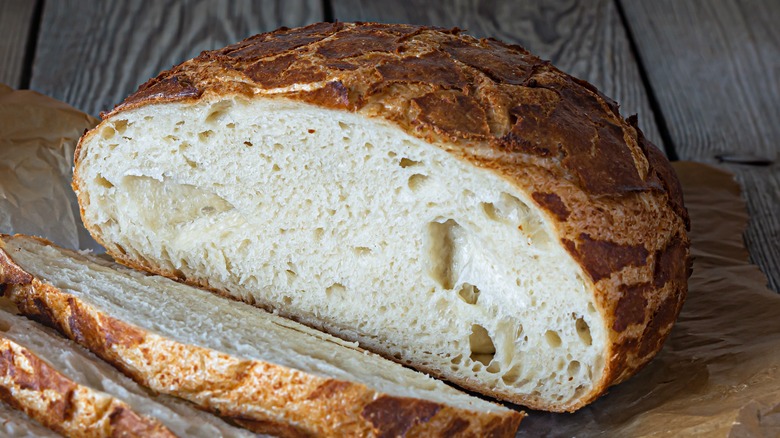What Exactly Is Tiger Bread And How Does It Get Its Pattern?
In the modern age, we have far more bread options at our disposal than plain old Wonder Bread. You can go to pretty much any grocery store and easily pick up varieties like sourdough, ciabatta, and brioche — a convenience of which our grandparents could only dream. But there's another bread you might not be familiar with that can make for some delicious sandwiches: tiger bread.
If you're from northern California, you're almost certainly familiar with tiger bread, albeit under a different name: Dutch crunch bread. Whichever you call it, though, tiger bread's pattern is extremely distinct. This unusual appearance and texture is accomplished in a rather unique way: A paste of rice flour, toasted sesame oil, yeast, and sugar is applied to the surface of the bread. This slurry cracks apart as the bread bakes and expands, leading to a mottled pattern of slightly sweet, crispy segments that stands out as truly unique amidst the sea of loaf options.
The Dutch are the ones who named it
It's both easy and difficult to see why this stuff is often called "tiger bread." It has an unusual visual pattern, which we typically associate with something like a tiger ... but also, tigers have stripes, not spots. Why not leopard bread? Regardless, this naming convention came right from the source; it's been called "tijgerbrood" in the Netherlands (hence "Dutch crunch") since they created it in the 1970s. Though it hasn't yet attained broader popularity across America, it's now quite common across the San Francisco Bay area.
What's easier to understand than its name, though, is why it's popular: It's very, very good. Tiger bread provides a truly satisfying outer crunch without — and this is important — gnawing away at the roof of your mouth. This texture is contrasted against its pillowy center for a bite that is nothing if not texturally satisfying. And this isn't even covering its versatility.
Tiger bread is great for both sandwiches and soups
When people talk about sandwiches, they almost always discuss fillings first, last, and always. The thing is, though, the quality of bread truly makes or breaks a sandwich. The reason why a place like Penn Station is one of the best chain sandwich shops in America is because of the quality of its bread. Tiger bread is particularly useful here because its texture lends itself well to sandwiches, providing a nice crunch and a subtle sweetness without overpowering the fillings it's paired with. It's also particularly great as an accompaniment to soups because, as a crusty bread, it holds up well to sopping up liquids, maintaining its crunchy texture rather than becoming soggy and falling apart.
If you have a chance to try tiger bread, you should really take it. And who knows? Maybe it will be coming to a grocery store bread aisle near you soon enough.


